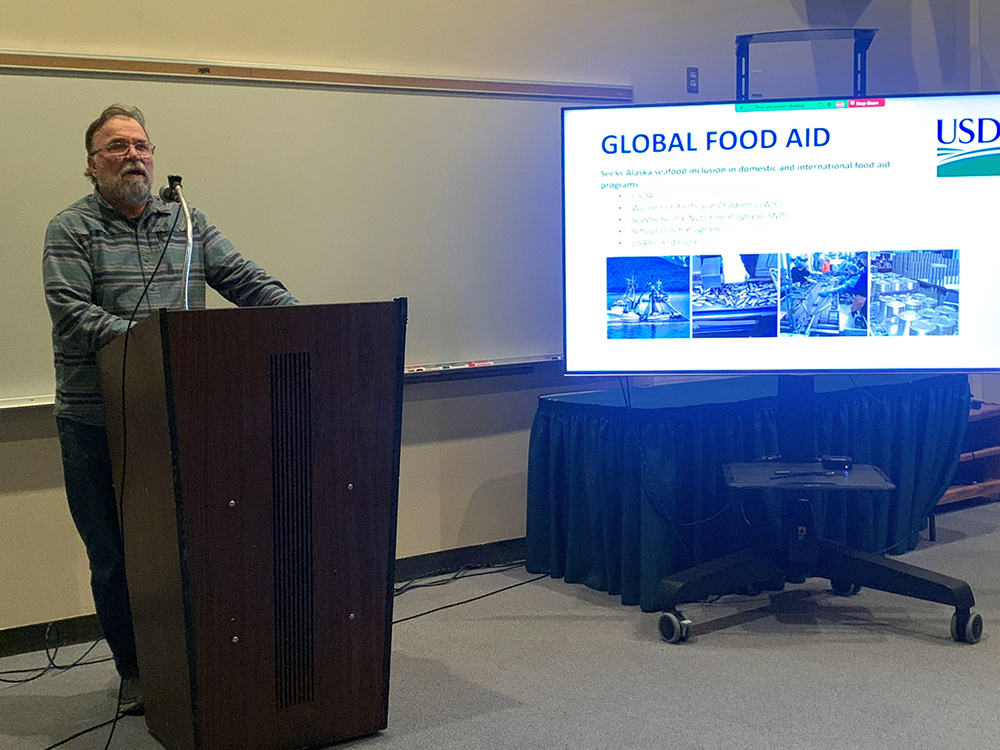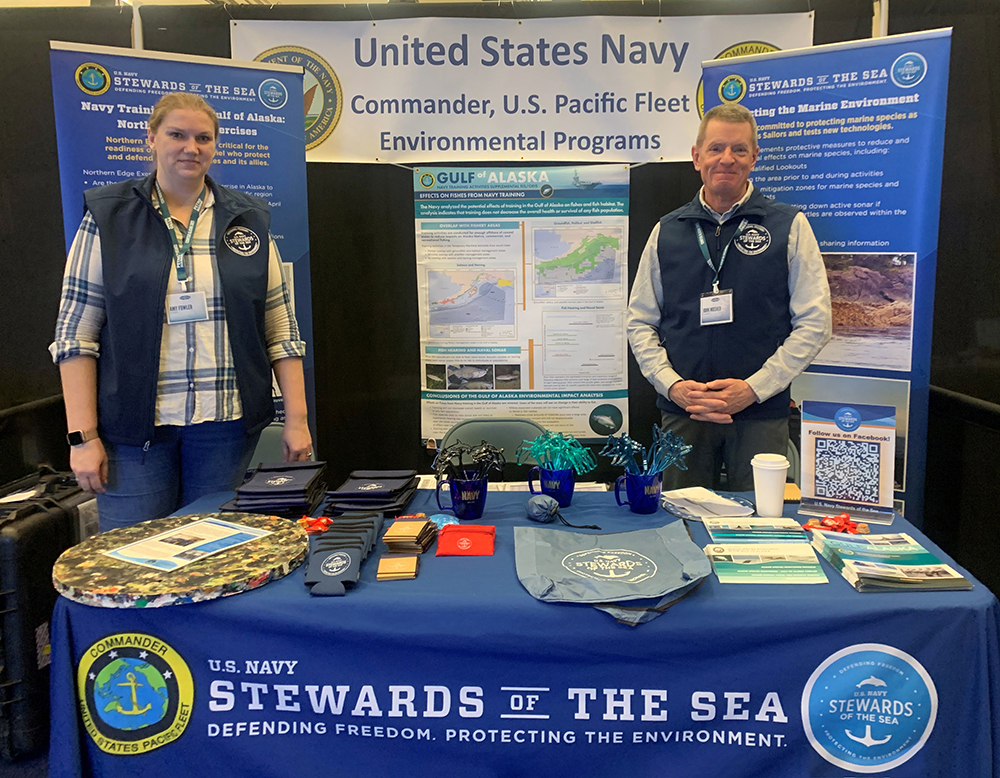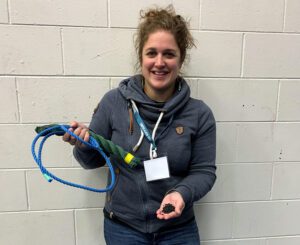
Participants in ComFish Alaska 2023, undeterred by a spring snowstorm that halted jet traffic in and out of Kodiak for a day, tackled climate challenges to fisheries, as well as the prospective economic and environmental benefits of kelp mariculture efforts.
The state’s biggest and longest-running commercial fisheries trade show—which began in a borrowed Alaska National Guard tent in 1980—incorporated into this year’s March 16-18 program a mix of presenters ranging from harvesters, fisheries managers, federal and state legislators to historians and experts in marine debris and kelp mariculture.
The event also featured 50 trade show booths offering fishing marine supplies, vessel permits and sales, expertise in satellite technology, health care, recycling, seafood marketing and more.
During a forum on federal legislation on the first day of the trade show, Rep. Mary Peltola, D-Alaska, praised the Biden administration’s recent approval of the Willow oil exploration project on Alaska’s North Slope, and the U.S. Environmental Protection Agency’s veto of the Pebble mine project in Southwest Alaska, protecting the Bristol Bay watershed under the Clean Water Act.
The Wild Fish Conservancy lawsuit to shut down Southeast Alaska troll fishery is one of the least effective ways to help the killer whales in Puget Sound, Peltola said, adding that Southern Resident orca whales are hundreds of miles away from that troll fishery, and the Alaska delegation has filed a brief challenging the lawsuit.

“We will not let our Alaska small boat trollers be bullied,” she commented. “I’m hopeful that NOAA and the state will find a path for us to have a king salmon fishery again this year, as we have for over 100 years.”
Peltola described bycatch issues as “the elephant in the room,” adding that improvements are needed in bycatch regulations.
“Some people say that there’s nothing that we can do, or climate change is to blame and that’s it. And I’m just not willing to write off salmon and write off the people that depend on salmon to survive,” she said. “Still, those changes will take time and it could be 30 years before our fisheries fully recover.”
Sen. Lisa Murkowski described the declines in salmon, halibut and crab fisheries as being at crisis levels and said a number of responses are needed.
“I don’t like to use the word ‘crisis’ lightly, but I think crisis is the appropriate word here,” she said. “I wish that we could tell you the exact causes, I wish there was one single thing to explain everything.”
Current management of the fisheries does not always reflect what’s happening in the ocean, she explained.
“The changes that we’re seeing and that we’re not understanding, are happening at a rate that our systems are not designed to be responsive to,” she said. “When we see acts of God that are becoming trends of nature, it really is going to require us to reevaluate processes, to respond to them and address them.”
In a separate session, Sen. Dan Sullivan, R-Alaska, gave an update on the Save Our Seas 2.0 Amendments Act, which he is sponsoring. The legislation contains three provisions that would enhance the nation’s domestic programs addressing marine debris, international engagement to combat marine debris, and domestic infrastructure to prevent marine debris.
The senator also said he was working to have this year’s federal farm bill include a bigger focus on the fishing industry, and noted the millions of dollars awarded to the Alaska fishing industry because of the pandemic.
Additionally, he voiced support for Alaska fishermen facing litigation from the Wild Fish Conservancy in Seattle, which wants to halt the Chinook salmon fishery in Southeast Alaska to provide more fish for Southern Resident orca whales in Puget Sound.

Related biological reports have indicated that halting the Southeast Alaska Chinook fishery would not provide additional salmon for hungry orcas, who compete with other species in Puget Sound for the fish.
Bruce Schactler, who heads the Alaska Seafood Marketing Association’s global food aid program, addressed the Alaska salmon price and production reports.
The state requires large processors who sell salmon products at wholesale prices to provide production and price information to the Department of Revenue’s tax division. That information is used to public average wholesale price information to the Alaska Legislature and to the public.
Also during the event, Kodiak kelp farmer Nick Mangini participated in a panel about the economic opportunities that kelp farming provides for Kodiak and other coastal regions of the state.
For starters, Mangini said, he had to learn to design his own gear for kelp farming, including seeding systems and learn how to provide growing amounts of kelp for commodities markets.
Mangini, who’s also a veteran commercial Pacific cod fisherman, said that Kodiak having a skilled workforce in kelp farming, positions it to be a mariculture hub, and that mariculture offers a good opportunity to make a living at home.
“Currently, we outplant the seed starting Nov. 1, but because of sea issues, we outplant through Jan. 1,” he explained.

Mangini, who is also the mariculture director for the Southwest Alaska Municipal Conference (SWAMC) was one of the first kelp farmers in Alaska and has landed Blue Evolution, a Northern California firm that offers seaweed-based food and beverage products, as a buyer of its kelp.
Mangini said he has leased a total of 17 acres, but that only 4.8 acres is on top of the water. He estimated that if conditions are right, he can grow about 200,000 pounds of kelp.
One of the toughest parts of getting started harvesting kelp, he said, was the permitting process, though he admitted that it has become easier over time.
ComFish Alaska is the state’s premier commercial fisheries trade show and educational forum. Presentations from this year’s event are available at www.comfishak.com.
